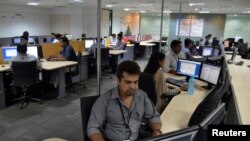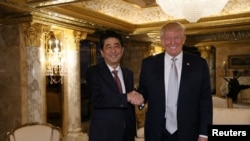Japan is reportedly planning to approve new visa rules to attract more foreign workers.
The proposed change comes as the United States considers new immigration reforms to limit the number of foreign workers it accepts.
The new rules would speed up the process for temporary workers to get permanent residency, according to multiple reports quoting officials from the Japan External Trade Organization (JETRO).
If the government plan is approved, it would allow skilled foreign workers in Japan to receive permanent residency within 1-2 years, according to JETRO Chief Director General Kazuya Nakajo.
Currently, Japan’s points-based temporary worker program requires visa holders to wait five years before applying for permanent residency.
JETRO Executive Vice President Shigeki Maeda also spoke about the planned changes at a recent trade event in India. “We are trying to make the Japanese business environment better for foreign companies through introducing a new type of green card system,” he was quoted as saying.
U.S. considers changes in H-1B visa program
The new Japanese proposal comes as U.S. officials consider changing its H-1B visa program.
The H-1B visa allows foreign workers to stay in the U.S. for up to six years. After a maximum stay of six years, H-1B visa holders can either return to their home country or apply for permanent U.S. residency, also known as a “green card.”
The program is designed to employ foreign workers in jobs requiring “specialized knowledge,” according to the U.S. Department of Homeland Security. Many of the jobs are filled by scientists, engineers and computer programmers.
The American technology industry has relied on H-1B visas to bring in skilled workers that it says are difficult to find in the U.S. Workers cannot apply for an H-1B visa on their own. The company that wants to employ them must do so.
The number of H-1B visas is limited to a total of 85,000 per year. A lottery is held to choose which applicants get approved. Last year, there were more than 200,000 requests for H-1B visas.
During his presidential campaign, Donald Trump criticized visa programs that allow U.S. employers to bring in skilled foreign workers. He promised to make changes to see that more of those jobs go to Americans, not foreigners.
A draft of an executive order has reportedly been prepared for President Donald Trump, according to the Associated Press. The draft calls for a nine-month government study to look at current visa programs, including the H-1B program.
A government report will then be issued about ways U.S. workers are harmed by working visas such as the H-1B, AP reported. It will also reportedly seek ways to make sure H-1B visas end up going to “the best and the brightest” people.
Trump’s new Attorney General, Jeff Sessions, has also voiced opposition to the current H-1B program. And the U.S. Congress also has proposed legislation to reform the program.
On Friday in Washington, Trump and Japanese Prime Minister Shinzo Abe are expected to discuss trade and other issues at the White House. It will be the second meeting for the two leaders. Trump will also host Abe over the weekend for a round of golf near the president’s Mar-a-Lago resort in Palm Beach, Florida.
I’m Bryan Lynn.
Bryan Lynn wrote this story for VOA Learning English, based on reports from VOA News, the Associated Press and Reuters. Hai Do was the editor.
We want to hear from you. Write to us in the Comments section, and visit our Facebook page.
_______________________________________________________________
Words in This Story
residency – n. legal permission to live in a place
green card – n. official document allowing a foreign to permanently live and work in the United States
lottery – n. system used to decide who gets something by choosing names or numbers by chance
host – v. to be the person in charge of entertaining guests











